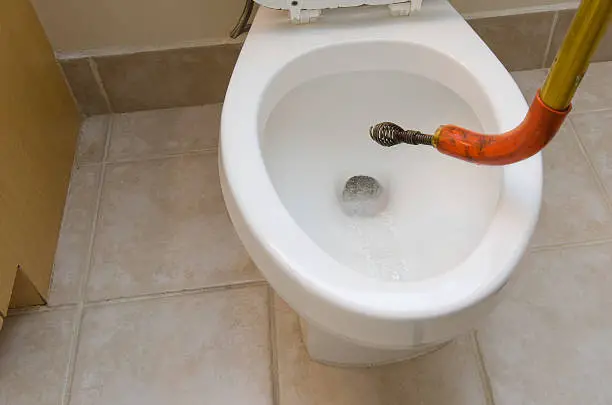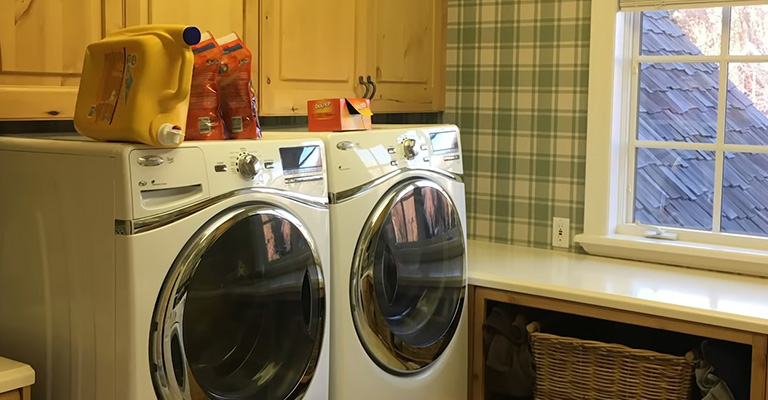What Is the Best Base for Pavers?
For more extensively used patios, a crushed stone base would be the best option. There are stone dust, recycled concrete aggregate, sand, and other materials which make a pretty good base for different scenarios.
What Is the Best Base for Pavers?
A good base underneath the pavers can make them firm, even surfaced and long-lasting. But finding the best one for you might be difficult. You may have to look up multiple parameters of every base material.
The Interlocking Concrete Pavement Institute approves the best base sand for pavers is washed concrete sand. Washed concrete sand or bedding sand doesn’t trap excessive quantities of water thus enhancing the durability of pavers. Crushed stones are impressively great at their services too.
What are the quality requirements for base materials?
The quality of the paver base depends on a few categories. You can choose what’s right for your walkway by checking these criteria. They are:
- Regular water drainage
- Endurance for the force put on pavers
- Suitable thickness of the base
Now let’s discuss the base materials in descending order according to the standard.
Crushed Stone
A crushed stone paver base consists of small broken uniform stone pieces. According to the Minerals Education Coalition, aggregation of rock types e. g. limestone, dolomite, granite, and trap rock are ideal for the role of paver base. Professionals recommend 3-4 inch crushed stones (quarry processed dense grade) specifically for paver placement.
These types of stones are popular for their outstanding binding ability, strength, endurance, and excellent cohesion force.
A crushed stone base is a perfect option for considerably used patios. But you can use this base on other types of patios as well. There are hardly any complications present. Crushed stones underneath a paver base serve good water drainage which adds an advantage over other base ingredients. The installation process is simple too.
Sand
Nowadays a sand paver base is very high on demand owing to sand’s accessibility and spreadability. Sand works as a stabilizer for a paver piece. However, sand is not a perfect base material alone. After a brief period, sand shifts and creates an uneven foundation. You will start to notice the unbalanced patterns of pavers. So, a sand base is suitable for a lightly used patio.
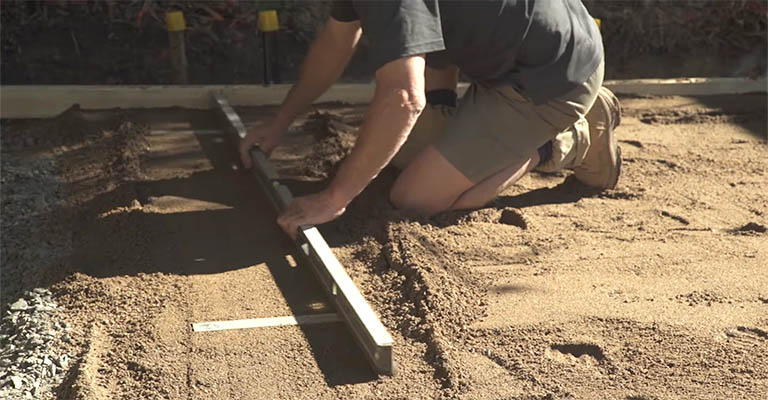
That’s why sand is often mixed with crushed stone to increase durability. Among all types of sands with different fineness and coarseness, washed concrete sand is the best paver base according to The Interlocking Concrete Pavement Institute.
Bedding sand, another name for Concrete sand, is coarse and doesn’t hold excess moisture beneath the paver surface. It drains out the redundant amount of water. Consequently, pavers can stay in proper shape even after heavy rain.
Recycled Concrete Aggregate
Recycled concrete aggregate (RCA) is a crushed stone alternative with better ecological benefits. Crushed concrete for paver base is decent. Because here, concrete works as a renewable source to produce RCA. The RCA-making process emits less carbon than crushed stone production. So it’s a sustainable choice.
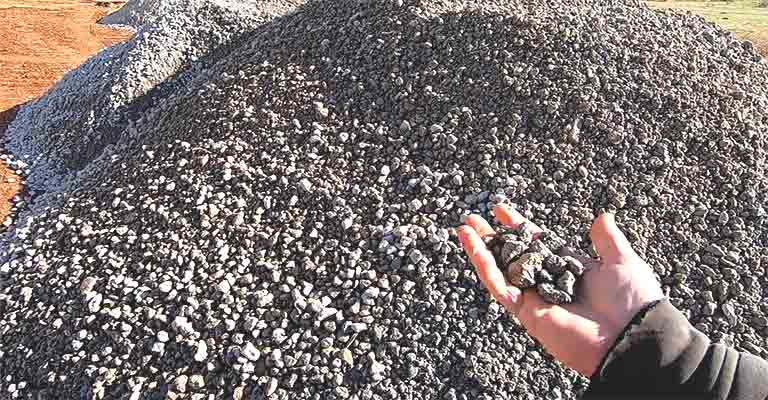
Both RCA and crushed stones function similarly under a paver but you can’t possibly know the composition of RCA. So, RCA is less reliable in this regard. If you have to use RCA, learn from the provider about the quality of rock mixtures.
Stone Dust
Stone dust is an extract composed of finely ground stones which has a sand-like texture. Experts forbid applying stone dust as a base component for its absolute smoothness. Because this fine texture leads pavers to sink and shift eventually. But stone dust is a wonderful auxiliary base ingredient if mixed with other bases.
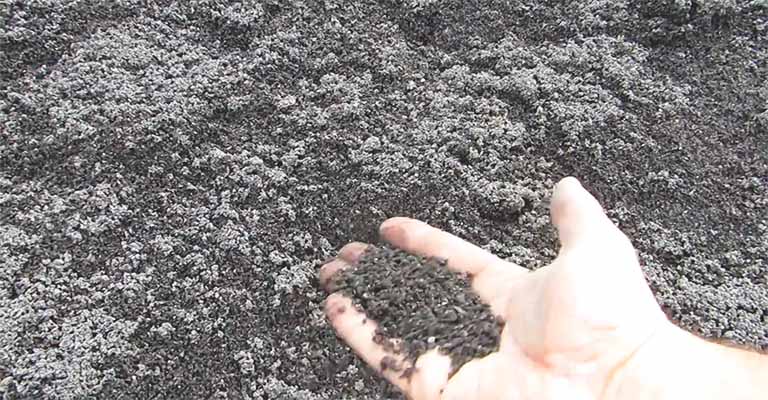
Stone dust along with finely minced ground stone is called “screenings”. These screenings belong to a category that has extra amounts of dust particles named “fines”. The fines store a huge quantity of water to protect the base layer from overflow.
According to the Interlocking Concrete Pavement Institute, the trapped water corrupts a base’s stability, strength, and longevity. So it’s wise to choose something that can increase the firmness of your paving stones.
Compacted Soil
Compacted soil is generally the subgrade level foundation underneath pavers. If you’re installing a terrace for just one season, using compacted soil as a paver base might be alright. A loosely compacted soil base allows the pavers to shift or submerge specifically on the grassy ground.
Some other issues like poor drainage occur often. Longtime humidity might cause instability and asymmetry in your pavers. In addition, achieving an even surface with only compacted soil can be difficult in hilly regions.
Another problem is “weather warping”. Any changes in the ground will show signs in your pavers. For example, in winter when the soil underneath the paver stones freezes, the ground can sink, bend and break creating a risky walkway. Little advice to get a smooth and safe surface is to lay other materials on top of compacted soil and then install your pavers at the surface.
Best Applications According to Types of Bases
Concrete Base for Pavers
- Pool patios
- front porches
Installers prefer a concrete base, especially where concrete ground already exists in perfect condition to frame something on top of it.
Synthetic Base
- Slabs for any individual pedestrian traffic walkway
Brock Paver bases are some of the best in the market available.
Open-graded Base
- Raised patios
- Some cantilevered walls
Traditional Base
- Front paths on grade with the same application of base on the driveway.
- Some Retaining Walls.
Moss growing between pavers
Some people like to grow moss in between two greatly spaced pavers to add a vintage or old English look. But mind you, adding sand between pavers is meant to keep herbs out, so by planting moss you are basically allowing the paver base to let the moss grow in and spread out.
After letting organic material e.g., moss into the paver joints, it gets very difficult to get out again. Besides, on rainy days wet moss creates a slippery mess leading to tripping hazards. It becomes extremely tough to uproot the overgrown moss from stone joints. So, nurturing moss is not a good idea after all. Even if you do, you need to keep the growth in control.
Frequently Asked Questions (FAQs)
Do I need to seal my pavers?
In one word, yes. Paver sling is mandatory maintenance to keep paver patios, walkways, driveways, and pool decks uniform on the surface.
How long should pavers last?
Pavers usually stay intact for 50-100 years or more. In contrast to concrete surfaces, you can fix, replace or renovate pavers comfortably when it is necessary.
Do I need gravel under pavers?
It is not essential to use gravel as your paver base but without any, foundation pavers will sink, break and dislocate soon. So, instead of gravel use a solid base composed of sand, crushed stones, or other materials to keep the pavers firm in their position.
How much area does a bag of paver base cover?
Each bag of paver base covers a half cubic foot which means 3 square feet at 2″ deep, 2 square feet at 3″ deep and 1.5 square feet at 4″ deep.
To Conclude
No such paver base material alone is universal for every purpose. Different projects require different kinds of bases. So, choose wisely according to the variables concerned. Consider the pros and cons of base ingredients and choose the right one for your use.
Selecting the optimal paver base material is crucial for a successful paver installation. Whether you aim to lay pavers for a paver patio or any other paver project, ensuring you use a suitable base material is key to longevity and stability. From preparing the ground to install pavers, every step in the process contributes to the overall durability and appearance of your patio pavers. Therefore, investing time in understanding and choosing the right base will pay off in the long-term performance and aesthetics of your paver project.


